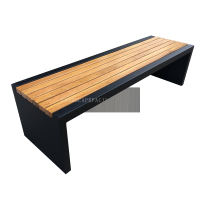Welcome to the website for landscape facilities products and knowledge.
Are there any restrictions on the table’s use in public or communal spaces due to safety regulations?
When incorporating tables into public or communal areas, numerous safety regulations come into play that dictate their permissible use. These guidelines primarily focus on three key aspects: material composition, spatial allocation, and user capacity.
Fire safety standards represent one of the most critical considerations. Tables in publicly accessible buildings typically must be constructed from fire-retardant materials that meet specific combustion resistance ratings. This requirement varies by jurisdiction but generally applies to spaces accommodating more than 50 people. The furniture's placement must never obstruct emergency exits or create narrow passages that could impede evacuation during crises.
Accessibility mandates form another crucial regulatory layer. The Americans with Disabilities Act (ADA) and similar international standards require adequate clearance beneath tables to accommodate wheelchair users - typically 27 inches high and 19 inches deep. In dining configurations, a minimum of 5% of tables must be wheelchair accessible, with clear floor space measuring at least 30 by 48 inches.
Structural integrity requirements ensure tables can withstand anticipated loads and usage patterns. Commercial-grade tables must support significantly greater weight than residential furniture - often 300-500 pounds distributed evenly. Stability testing prevents tipping hazards, particularly important in environments with children or elderly users.
Occupancy calculations directly influence table arrangements. Building codes specify minimum square footage per person, which determines how many tables can be installed while maintaining safe circulation paths. Generally, 15 square feet per person represents the minimum for standing spaces, while seated arrangements require 25-30 square feet per person.
Additional considerations include sanitation protocols for high-traffic areas, sharp edge prohibitions in facilities serving vulnerable populations, and electrical safety standards for tables incorporating power outlets. Regular inspections typically verify ongoing compliance with these multifaceted regulations.
Establishment managers should consult local building codes and fire marshals before finalizing table arrangements, as requirements can differ substantially between municipalities and specific building classifications. Proper adherence not only ensures legal compliance but significantly enhances occupant safety in shared environments.
Related search:

Recommendation
Modern Stainless Steel Begonia Wood Park Chair Outdoor Courtyard Leisure Sun Protection Bench Long Seat